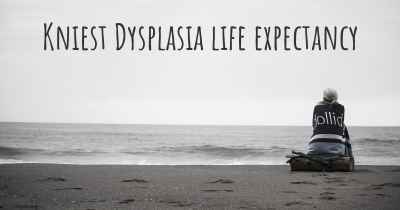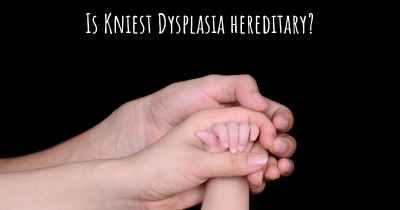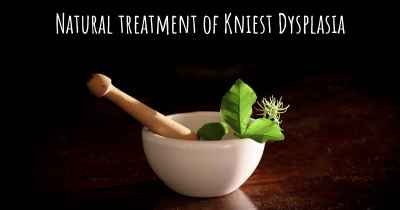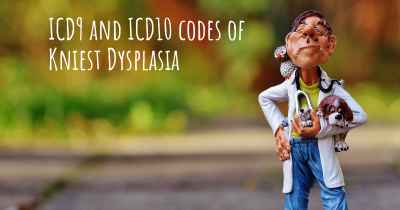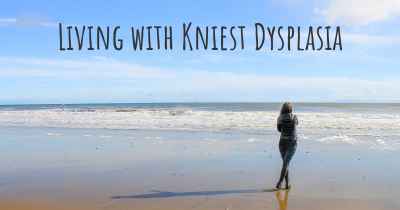8
Which advice would you give to someone who has just been diagnosed with Kniest Dysplasia?
See some advice from people with experience in Kniest Dysplasia to people who have just been diagnosed with Kniest Dysplasia
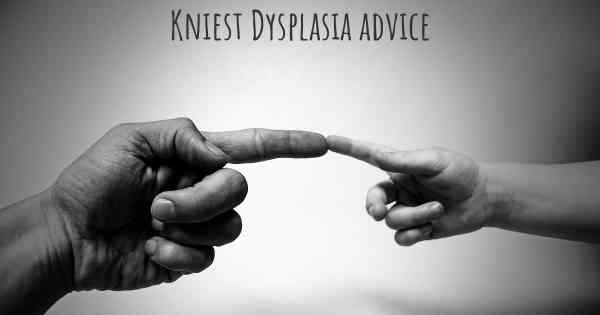
Advice for Someone Diagnosed with Kniest Dysplasia
Receiving a diagnosis of Kniest Dysplasia can be overwhelming and raise many questions about what lies ahead. While I am not a medical professional, I can offer some general advice and suggestions to help you navigate this journey:
- Seek Expert Medical Guidance: It is crucial to consult with a healthcare professional who specializes in genetic disorders and skeletal dysplasias. They can provide accurate information, answer your questions, and guide you through the management of Kniest Dysplasia.
- Educate Yourself: Understanding the condition is empowering. Research reputable sources, such as medical journals and trusted organizations, to learn more about Kniest Dysplasia. This knowledge will help you make informed decisions and advocate for yourself or your loved one.
- Build a Support Network: Connect with others who have experience with Kniest Dysplasia. Support groups, online communities, and local organizations can provide valuable emotional support, share experiences, and offer practical advice.
- Regular Medical Monitoring: Establish a long-term relationship with a healthcare team experienced in managing Kniest Dysplasia. Regular check-ups and monitoring will help track growth, identify potential complications, and ensure appropriate interventions are in place.
- Physical Therapy and Rehabilitation: Engage with a physical therapist who specializes in skeletal dysplasias. They can develop a tailored exercise program to improve mobility, strength, and overall quality of life. Rehabilitation may also involve occupational and speech therapy, depending on individual needs.
- Orthopedic Interventions: Depending on the severity of symptoms, orthopedic interventions may be necessary. These can include surgeries to address skeletal abnormalities, such as limb lengthening or spinal fusion. Consult with an orthopedic specialist to explore available options.
- Manage Respiratory Health: Some individuals with Kniest Dysplasia may experience respiratory challenges due to chest abnormalities. Regular respiratory assessments, pulmonary function tests, and appropriate interventions can help maintain optimal lung health.
- Emotional and Psychological Support: Living with a rare genetic disorder can be emotionally challenging. Seek counseling or therapy to address any psychological or emotional difficulties that may arise. Mental well-being is just as important as physical health.
- Educate Your Support System: Educate your family, friends, and caregivers about Kniest Dysplasia. Help them understand the condition, its impact on daily life, and how they can provide support. Open communication and awareness will foster a more inclusive and understanding environment.
- Advocate for Accessibility: Depending on individual needs, ensure that appropriate accommodations are in place at home, school, or work. This may include modifications to the physical environment, assistive devices, or accessibility support.
Remember, every individual's experience with Kniest Dysplasia is unique, and the advice provided here may not cover all aspects of your specific situation. It is essential to consult with healthcare professionals who can tailor their recommendations to your specific needs. Stay positive, stay informed, and reach out for support when needed. You are not alone on this journey.
Diseasemaps
s a rare form of dwarfism caused by a mutation in the COL2A1 gene on chromosome 12.[1] The COL2A1 gene is responsible for producing type II collagen. The mutation of COL2A1 gene leads to abnormal skeletal growth and problems with hearing and vision. What characterizes kniest dysplasia from other type II Osteochondrodysplasia is the level of severity and the dumb-bell shape of shortened long tubular bones.[2] This condition was first diagnosed by Dr. Wilhelm Kniest in 1952. Dr. Kniest noticed that his 50 year old patient was having difficulties with restricted joint mobility. The patient had a short stature and was also suffering from blindness. Upon analysis of the patient's DNA, Dr. Kniest discovered that a mutation had occurred at a splice site of the COL2A1 gene. This condition is very rare and occurs less than 1 in 1,000,000 people. Males and females have equal chances of having this condition.[3] Currently, there is no cure for kniest dysplasia. Alternative names for Kniest Dysplasia can include Kniest Syndrome, Swiss Cheese Cartilage Syndrome, Kniest Chondrodystrophy, or Metatrophic Dwarfism Type II.
Posted Oct 31, 2018 by Shere 2500
